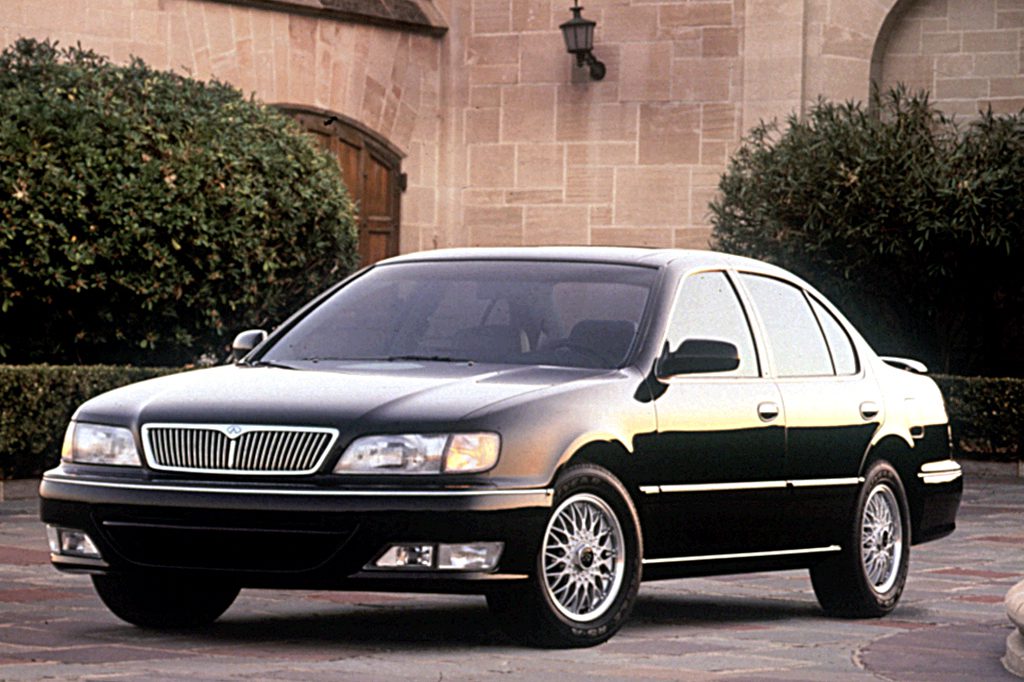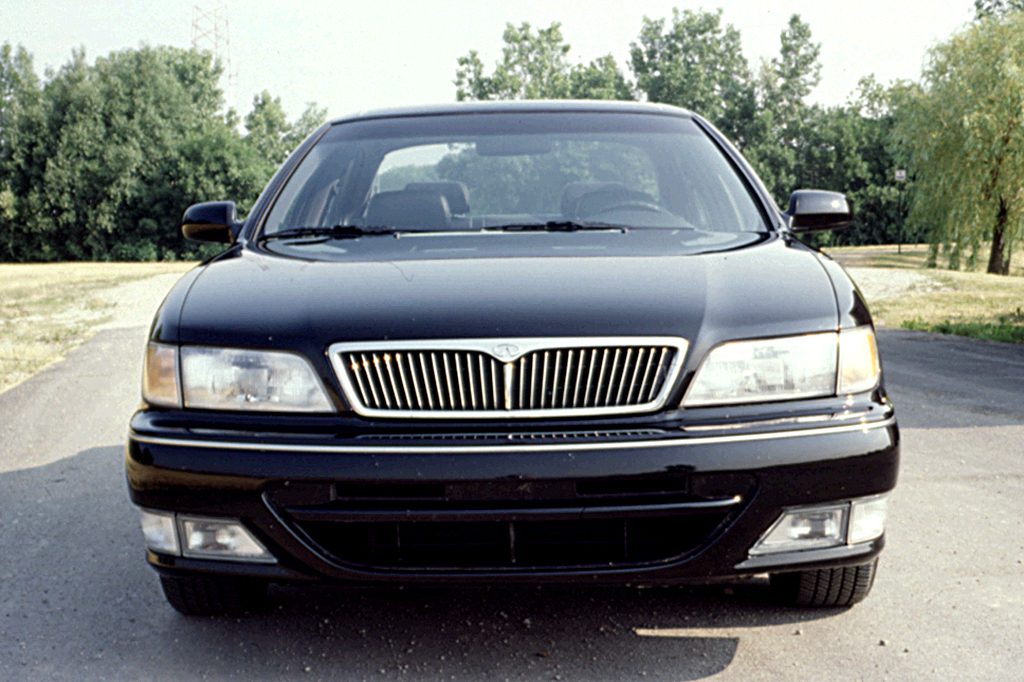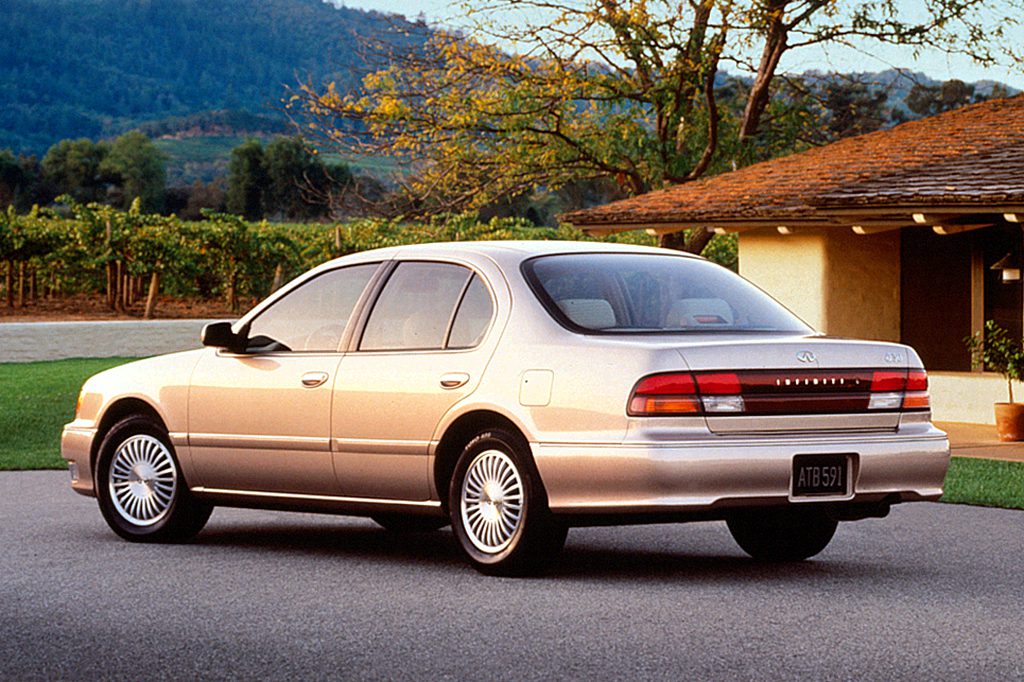| Premium midsize car; Built in Japan |
|
|
| Good condition price range: $2,200 – $3,900* |

1996 Infiniti I30t

1996 Infiniti I30

1996 Infiniti I30t

1997 Infiniti I30

1997 Infiniti I30
| Pros: |
|
| Cons: |
|
With more standard features than a Maxima, the I30 is well-equipped and a good alternative to the more expensive Lexus ES 300–a superior road car for long trips.
Overview
Nissan’s luxury division introduced this new sedan as an early ’96 model. The front-drive 4-door I30 was based on the design used for the Nissan Maxima. Both rode a 106.3-inch wheelbase. At 189.6 inches overall, the I30 was two inches longer than a Maxima. Exterior styling was the foremost difference between the two, with the I30 wearing a more formal-looking body. Both the I30 and Maxima used the same 190-horsepower, 3.0-liter V6 engine with dual camshafts. A 5-speed manual transmission was standard and 4-speed automatic optional. Suspensions, components, and interiors also were shared. Standard I30 features included dual airbags and antilock brakes.
Yearly Updates
| 1997 I30 Changes were few this year. |
| 1998 I30 Infiniti added standard front side airbags for 1998. Other I30 changes include new headlights and tailights. |
| 1999 I30 Traction control was a new option for automatic models and a midyear Limited model slotted in between the base I30 and sporty I30t. Heated seats moved from the standard equipment list to the option list. I30 was all new for 2000. |
